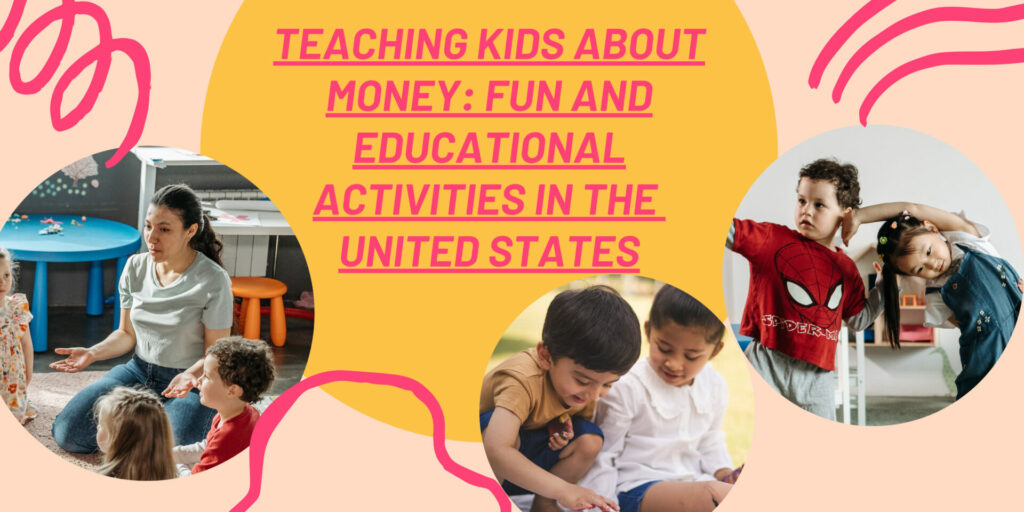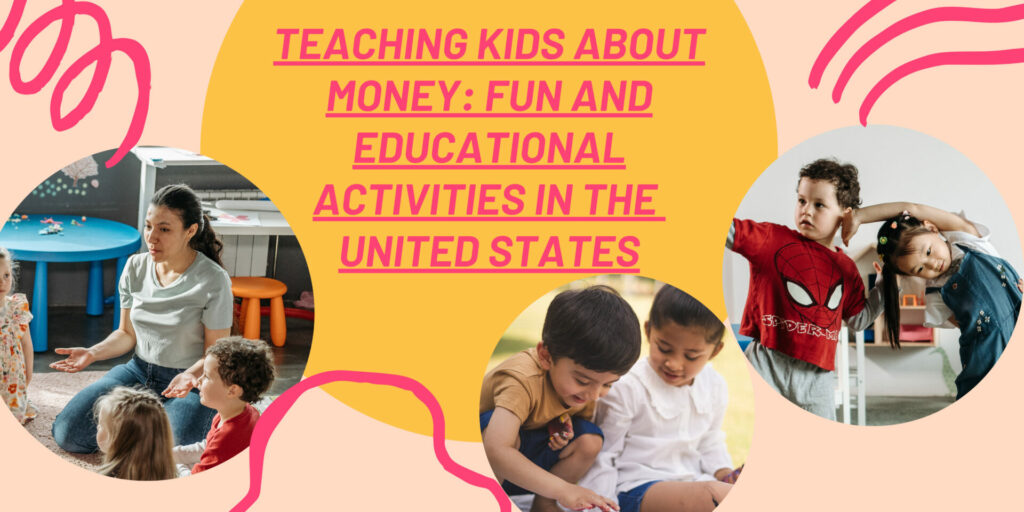In the United States, the significance of teaching kids about money is gaining recognition. This article explores engaging and effective ways to impart financial literacy skills to children through fun and educational activities.
Teaching Kids About Money in the USA:
- Early Financial Education: Commence financial education early by introducing basic concepts like coin recognition and counting in preschool and kindergarten.
- Real-life Scenarios: Enhance learning by incorporating real-life situations into lessons. Activities such as grocery store visits and pretend stores in the classroom create tangible connections between theory and practice.
- Budgeting Basics: Instill budgeting skills by giving students play money and guiding them to make choices within a set budget. This hands-on approach emphasizes decision-making based on available resources.
- Interactive Games: Utilize online educational games and apps designed to make learning about money enjoyable. Platforms like “PiggyBot” and “Counting Bills and Coins” provide interactive experiences for effective learning.
Fun Ways to Teach Financial Literacy:
- Role-playing Adventures: Engage students in financial role-playing activities, allowing them to take on roles like shopkeepers, consumers, or bankers. This practical approach combines learning with play.
- Storytelling Magic: Harness the power of storytelling to convey financial lessons. Using stories or children’s books with financial themes makes learning captivating and relatable.
- Educational Videos: Introduce short, entertaining videos explaining financial concepts. Platforms like YouTube offer a plethora of animated content designed to engage and educate children about money.
- Field Trips: Organize field trips to banks or local businesses for practical exposure. These outings not only make learning enjoyable but also provide real-world context.
Teaching Money Skills to Special Education Students:

- Adapting Activities: Modify activities to suit the needs of special education students, using tactile materials and adjusting the pace for diverse learning styles.
- Visual Aids for Understanding: Employ visual aids, charts, and diagrams to enhance comprehension, especially beneficial for special education students with different learning needs.
- Repetition and Reinforcement: Offer consistent opportunities for repetition and reinforcement to solidify understanding, and recognition of the unique learning requirements of special education students.
- Individualized Learning Plans: Develop tailored learning plans that cater to the specific needs and abilities of each special education student, ensuring a personalized and effective approach.
Activities for Teaching Money Skills:
- Money Math Puzzles: Create engaging puzzles that combine critical thinking with numerical skills related to money.
- Role-play Store Adventure: Set up a mini-store in the classroom for hands-on experience, allowing students to take on different roles and reinforce practical money skills.
- Budgeting Board Game: Design a board game involving budgeting for various expenses, offering a playful way for students to make decisions about spending and saving.
- Financial Literacy Worksheets: Develop worksheets covering money-related topics for continued learning, serving as valuable take-home resources.
Conclusion:
Fostering financial literacy in children through fun and educational activities lays a solid foundation for a financially responsible future. Whether through interactive games, role-playing, or real-life scenarios, creative and enjoyable financial education ensures that children in the USA develop the necessary knowledge and skills to navigate the financial world successfully.

